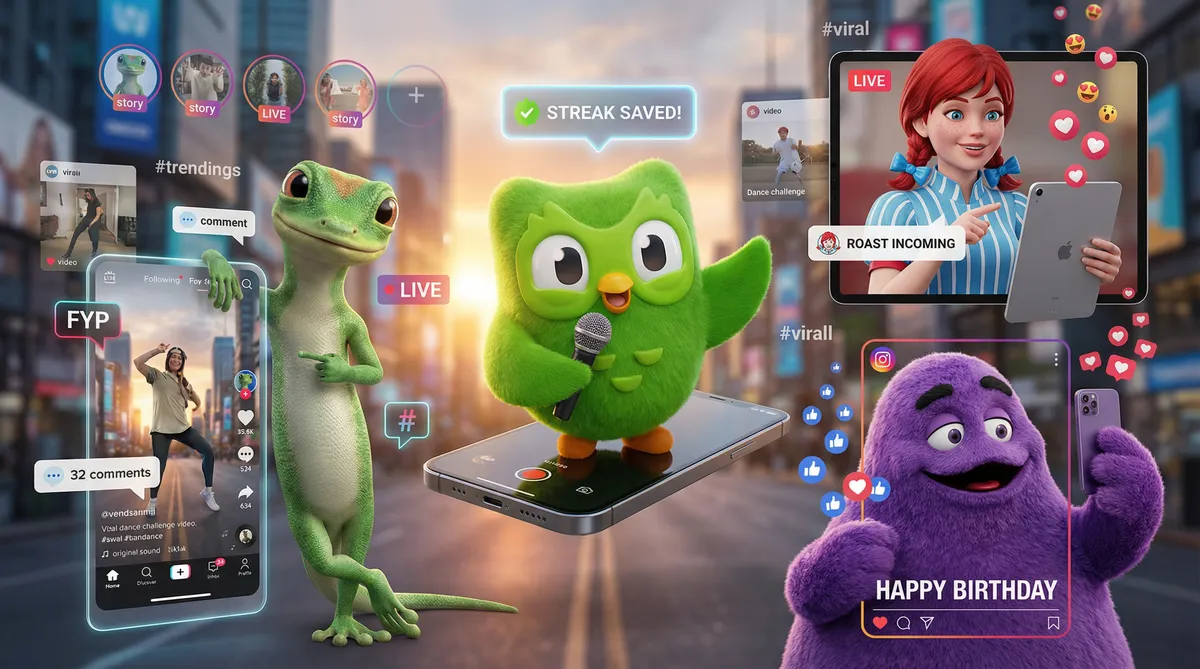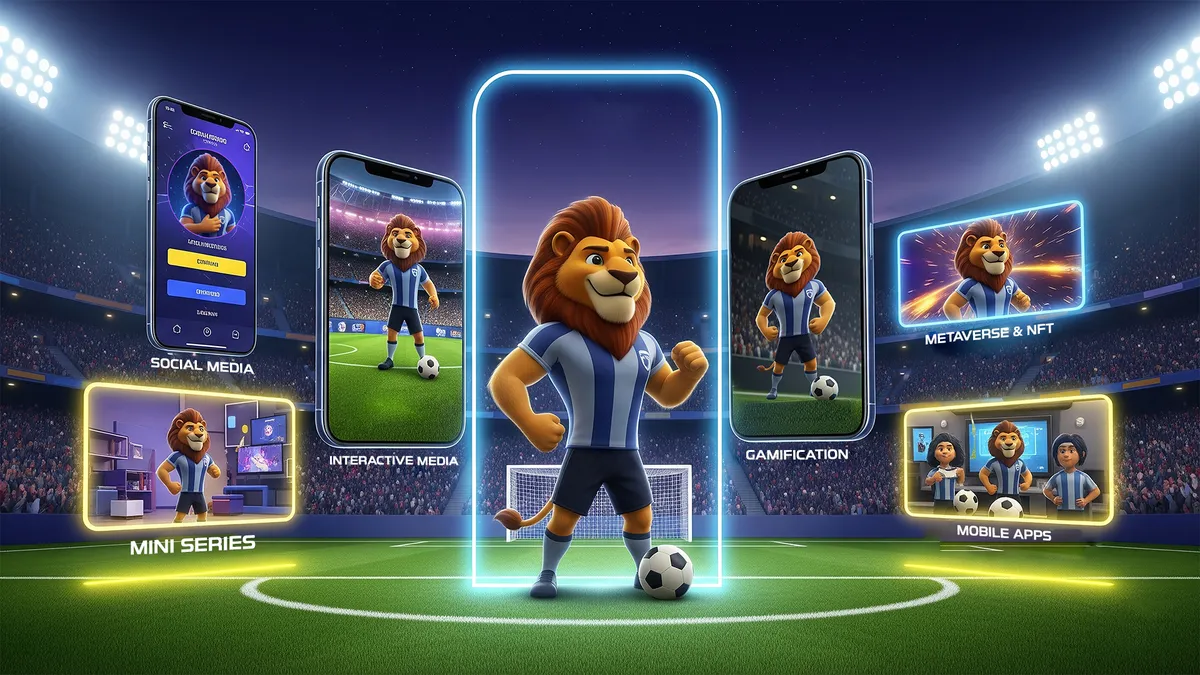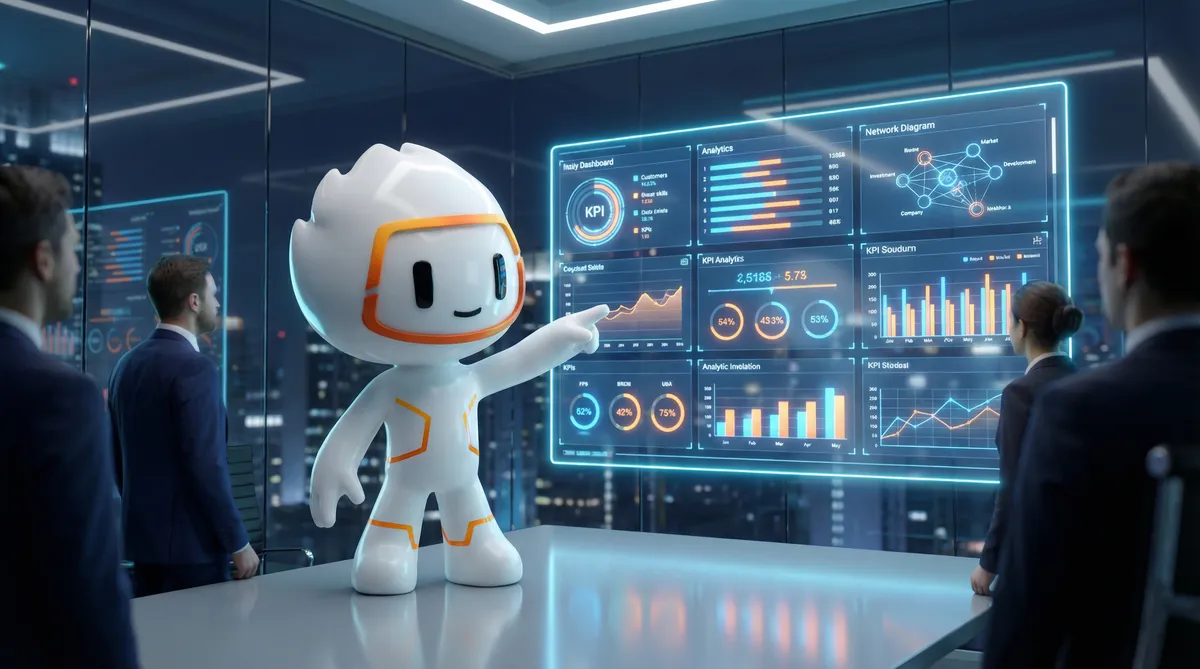
- The ROI of B2B Mascots: What the Data Says
- The Psychology: Why "Serious" B2B Brands Need Characters
- 7 Successful B2B Mascot Examples
- Time to Get Creative?
- Emotions Drive B2B Too
- To Win in Digital, You Need an Asset
- Case Study: Bridging B2B & B2C with Sungrow
- Should Startups Use Mascots?
- The Next Evolution: AI-Powered B2B Brand Mascots
- FAQs: Common Questions About B2B Mascots
- Ready to Stand Out? Now Let’s Talk Mascots
It’s no surprise that if you ask any business what their ultimate goal is in branding, the first thing they’ll say is, “We want to stand out!” Or maybe, “We want to be better!” They might even mention a couple of big competitors in their industry and say, “We want to beat them, and we want people to choose us instead!”
Fair enough. We get it.
One powerful, yet often overlooked, strategy to achieve this differentiation, especially in the B2B space, is the brand mascot. To effectively use this tool, it’s essential to first have a solid understanding of what brand mascots are and how they function.
A B2B Brand Mascot is a character-based asset designed to humanize complex business solutions, creating an emotional bridge between a company and its professional buyers.
Now, there are countless ways to achieve that, and we’ve all heard the options. When it comes to branding, we’ve seen lots of creative approaches out there, but there’s one that has literally been around forever—unique, yet often overlooked, especially in the B2B space—and that’s using a B2B brand mascot, or more commonly known as a brand character. It could be a person, an animal, an object, or something entirely made up.
Think about it—some mascots come to mind even faster than the brand itself, its logo, or even its color scheme. So why is it that B2B brands often say ‘no’ to this idea when there’s such huge potential?
In this article, we’re going to take a closer look at that question. Is this ‘no’ actually justified, or is it time for B2B brands to reconsider and embrace the power of B2B mascots?
Let’s dive in and find out.
The ROI of B2B Mascots: What the Data Says
Even though the use of mascots has dropped a lot in advertising over the past 20 years, the numbers show they’re actually becoming more effective. Here’s what stands out:
- Research by System1: Campaigns with mascots see 37% more market share growth. They also gain 27% more new customers and boost profits by 30%. These fluent devices help build mental availability and brand recall right away.
- Technicolor Studio: Long-term campaigns featuring mascots increase profits by 34.1%. They strengthen emotional connections, lifting engagement and loyalty by up to 41%.
- Ad Performance Boost: Mascots raise ad viewability and extend dwell time by 50%. They improve spontaneous brand recall by 25%, which cuts customer acquisition cost (CAC) over time and grows share of voice.
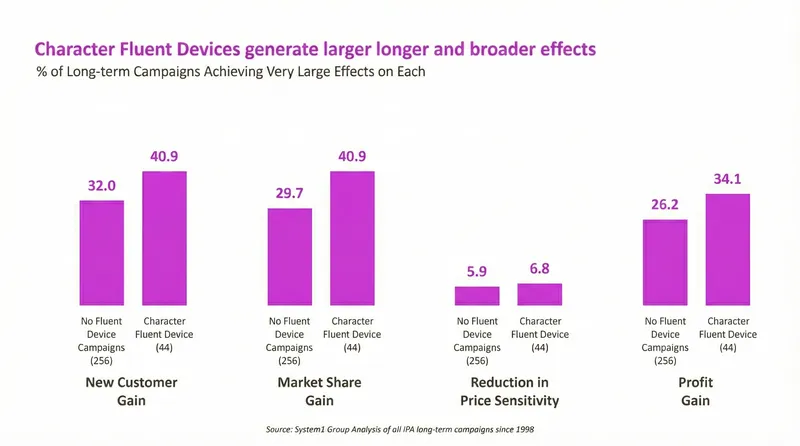
Why do they work so well? Fluent devices like mascots act as distinctive brand assets. They create category entry points (CEPs) that stick in buyers’ minds. This builds brand equity fast, turning one-time views into lasting loyalty.
Well, that’s huge for brands looking to grow. These days, ads are everywhere. Characters help you cut through the noise.
Overall, while fewer brands are using mascots today, their efficiency in building recognition, loyalty, and profitability is growing.
The Psychology: Why “Serious” B2B Brands Need Characters
B2B might feel all business, no play. But buyers are people too. They need more than facts. They want feelings that make choices easier.
Take the mere exposure effect. It means we trust what feels familiar. See something enough, and it grows on you. A mascot shows up often. It builds that quiet trust without trying too hard.
B2B buyers crave emotional connection. It helps them dodge the fear of a wrong pick. No one wants a deal that flops. A character steps in here. It turns dry specs into a story that hits home.
Here’s the trust mechanism at play. B2B folks hate risk. They pick safe bets. Mascots make your brand feel predictable and familiar. That sense of “I know this” sparks safety. Suddenly, your solution isn’t just smart. It’s the one they sleep easily with.
Ever notice pareidolia? We see faces in clouds or toast. It’s our brain’s hunting patterns. Add anthropomorphism. Give human traits to animals or objects, and boom.
Your mascot isn’t just cute. It’s a friend who gets the job done. That emotional connection? It’s gold for brand recall.
7 Successful B2B Mascot Examples
Mascots prove their worth across industries. Here are five that shine. Each one builds IP assets and standout vibes. Let’s break them down.
Salesforce (Astro): The “Guide” (Helping You Navigate Complexity)
Debuted in 1999
Industry: CRM Software
Astro, the fluffy cloud dog, burst onto the scene at Dreamforce. He’s your trusty sidekick in the wild world of sales tech. Picture this: endless dashboards and deals.
Astro simplifies it all with a wag and a grin. He pops up in emails, apps, and events, always pointing the way.
Strategic values? Users feel less lost, more in control. Salesforce’s mental availability skyrocketed. Astro isn’t just fun; it’s a fluent device that cuts CAC by making complex tools feel approachable. Buyers remember the brand that made their day easier.
While Salesforce’s core philosophy is all about “disrupting the status quo”, Astro plays the perfect counterpoint: the calm, friendly guide who helps you leave the old, clunky enterprise world behind and step confidently into the modern Trailblazer Community.
He simplifies dashboards, emails, apps, and events with a wag and a grin. Users feel less lost, more in control. Astro’s mental availability skyrocketed. He’s a fluent device that cuts CAC by making complex tools feel approachable and instantly memorable.
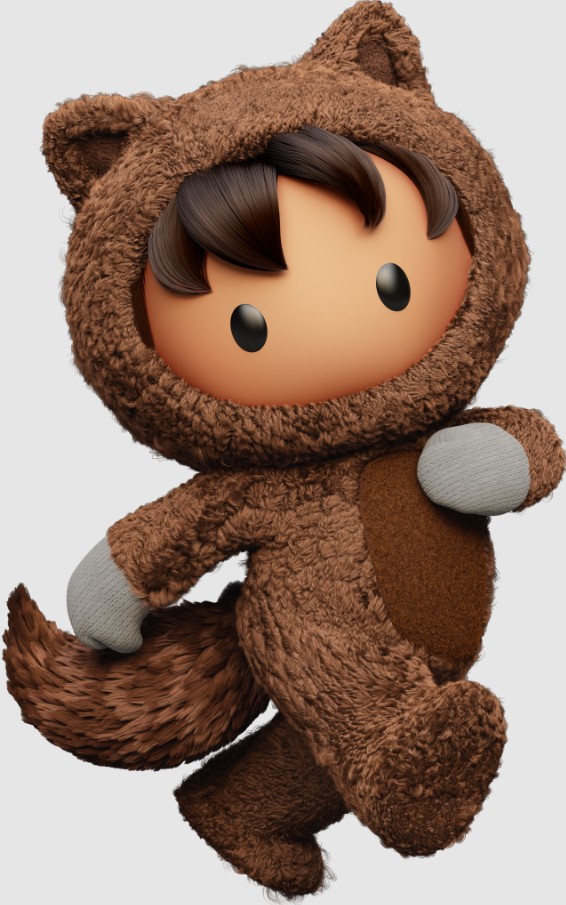
Mailchimp (Freddie): The “Wink” (Making Work Fun)
Debuted in 2008
Industry: Email Marketing
Freddie the chimp rocked his first suit in 2008, turning email blasts into a party. In a sea of boring newsletters, he winks and says, “Hey, marketing can be chill.” He guides users through templates with humor.
Think banana peels for bad sends. Mailchimp’s share of voice exploded as Freddie became the face of easy wins. He boosts emotional connection, turning dread into delight. As an IP asset, he’s everywhere: ads, swag, apps.
Brands love him because he humanizes the grind, lifting brand equity one chuckle at a time.
Snyk (Patch): The “Guardian” (Visualizing Invisible Protection)
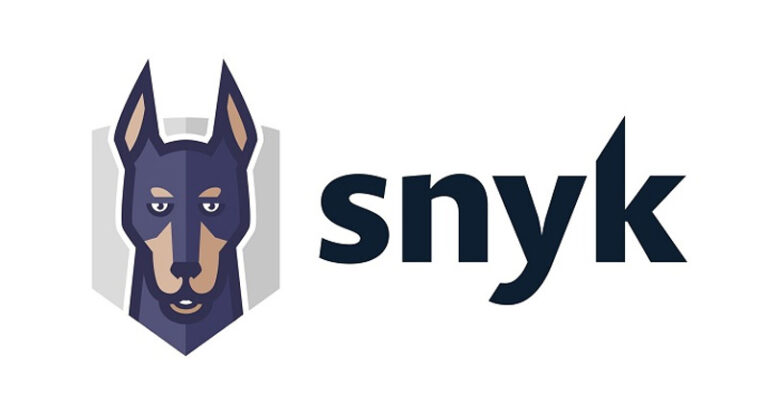
Debuted in 2022
Industry: Cybersecurity
Patch the patch, Snyk’s quirky hero, launched in 2022 to fight sneaky code bugs. In cybersecurity, threats hide in shadows. Patch shines a light, guarding devs like a caped crusader. He zips through scans, patching holes with flair.
Debuting amid rising hacks, he made “secure code” clickable. Snyk’s brand recall jumped as Patch turned jargon into comics. He’s a distinctive brand asset, cutting CAC by simplifying sales pitches. Devs trust him because he feels like backup, not a boss. Pure anthropomorphism magic.
Geico (Gecko): Proof That “Boring” Industries Need Characters Most
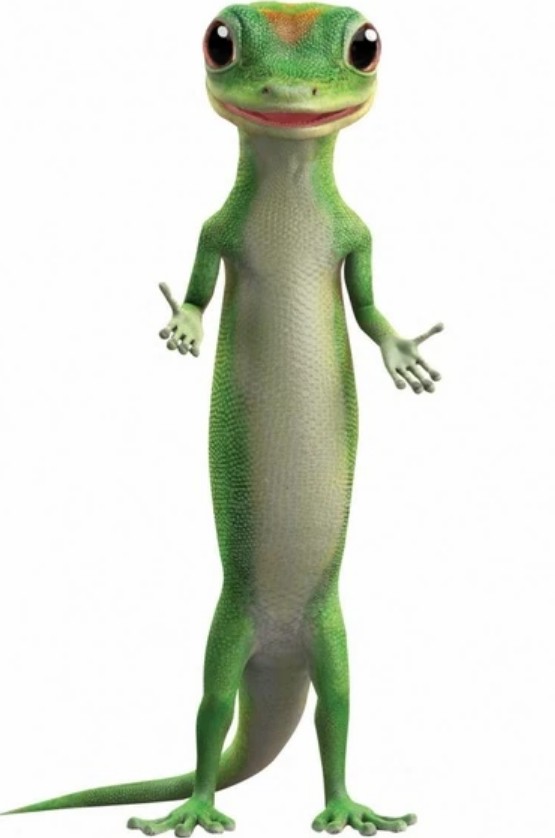
Debuted in 1999
Industry: Insurance
The Geico Gecko slithered in back in 1999, flipping insurance from snooze to superstar. “Save 15 minutes or more” became a jingle with an Aussie twang. In a dull field of fine print, he’s the cheeky rep who gets it. Ads with him spiked remarkable engagement. H
e builds emotional connection; insurance feels less scary with a lizard pal. As a CEP, he owns “easy quotes.” Geico’s equity soared, proving mascots thrive where stakes are high. B2B insurers, take note.
Aflac (Duck): Proof That “Boring” Industries Need Characters Most
Debuted in 2000
Industry: Insurance
Aflac’s Duck quacked its way in 2000, turning “supplemental insurance” into a household quip.
Frustrated by forgotten coverage? The Duck honks “Aflac!” In boardrooms or break rooms, he embodies the overlooked policy hero.
Sales jumped post-debut. He leverages pareidolia. That familiar waddle sticks. For B2B, he shows how characters humanize risks, boosting recall and trust. Aflac’s share of voice? Unbeatable. He’s the villain-slayer for boring buys.
Hootsuite (Owly): The “Wise Scheduler” (Taming Social Chaos)
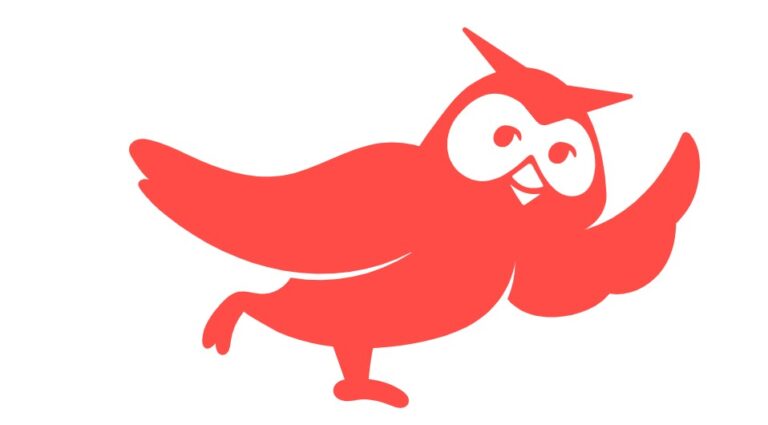
Debuted in 2008
Industry: Social Media Management
Owly the owl swooped in with Hootsuite’s launch in 2008, bringing calm to the social media frenzy. Amid endless posts and metrics, Owly hoots tips on timing and trends. He’s the night-shift buddy who spots what shines.
Owly’s big eyes tap pareidolia, making dashboards feel alive. Hootsuite’s mental availability soared as he became the go-to for pros juggling feeds. As a fluent device, he slashes CAC by turning tools into trusted pals. Brands flock because Owly makes the hustle feel handled.
Moz (Roger the Mozbot): The “SEO Sidekick” (Decoding Search Secrets)
Debuted in 2007
Industry: SEO Tools
Roger the Mozbot rolled out in 2007, a plucky robot cracking SEO codes for marketers. In the maze of algorithms and links, he’s the gadget guru with googly eyes and grit. From blog tips to MozCon swag, Roger geeks out on rankings.
He builds emotional connection with humor. Think bot fails turned wins. Moz’s share of voice boomed as Roger became an IP asset. He’s proof anthropomorphism works in tech: a distinctive brand asset that boosts recall and cuts CAC one query at a time.
Time to Get Creative?
So, we’ve gone over the data, and it’s pretty compelling.
But now, let’s zoom in on B2B and see how it can either benefit—or maybe face some challenges—when it comes to incorporating mascots.
In the B2B world, that “professional” image and “serious” tone are often considered so important that creativity gets shut down before it even has a chance. Sure, creative ideas can be brilliant, but they don’t always make it to the table. But here’s the thing—there’s power in tapping into a method that’s underused in certain industries.
It could be the key to standing out and becoming truly unique.
Emotions Drive B2B Too
Most B2B businesses seem to think that being formal (and let me just say it—sometimes BORING) is the key to building trust and driving purchases.
But guess what?
That’s not entirely true.
In fact, research by Google shows that B2B customers rely more on emotional connections than their B2C counterparts!
Shocking, right?
B2B customers are actually looking for that emotional bond to help them feel secure and overcome the risks involved in business purchases.
And here’s the golden opportunity—tapping into that emotional connection is where the real magic happens.
To Win in Digital, You Need an Asset
As we keep moving deeper into the digital world, yeah, traditional methods are still hanging around, but B2B brands are making a big shift toward more interactive, digital-first approaches.
Let’s face it, today’s decision-makers are drowning in a sea of digital content and information. They’re the ones choosing whether or not to engage with your brand, so if you’re not interesting or adding value right off the bat, you’re getting skipped.
Now more than ever, storytelling is key in B2B. But it’s not just about telling a nice story—it’s about building real interactions, showing value, and getting clients invested.
These decision-makers aren’t just looking at features or specs. They want something that connects with their business, something that helps them feel secure about reducing risk and making the right call.
And trust me, they’ve all got an eye on the future.
They’re thinking about how they can incorporate solutions that not only work today but also guide them through the unknowns that are coming up. So, it’s not just about solving the immediate problem—it’s about setting them up for whatever comes next.
How can they tell if your brand is aligned with this mindset?
Simple—through the approaches and solutions you are adopting.
If you want to grab their attention, your brand needs to come across as futuristic, communicative, and creative. Decision-makers are watching how you position yourself and the strategies you use. They want to know that you’re not just thinking about the now but also how you’re set up to tackle future challenges. If you show that you’re on the cutting edge, they’ll trust that your solutions are, too.
And this is where a mascot can really add a lot to your brand’s arsenal.
Mascots today are way beyond just a logo.
They can be integrated into chatbots, adding warmth to those automated interactions that can otherwise feel impersonal.
But it doesn’t stop there.
They’re becoming virtual influencers, showing up in videos and multimedia content to demonstrate services, share educational material, and act as a 24/7 brand ambassador.
As we move deeper into the digital world, mascots are finding their place in spaces like the Metaverse, where they can exist and interact with people in virtual environments.
These opportunities are endless, and B2B mascots can become a key asset, adding consistency, and through gamification and transmedia, they help create memorability, loyalty, and a stronger chance of attracting more clients right from the start.
Case Study: Bridging B2B & B2C with Sungrow
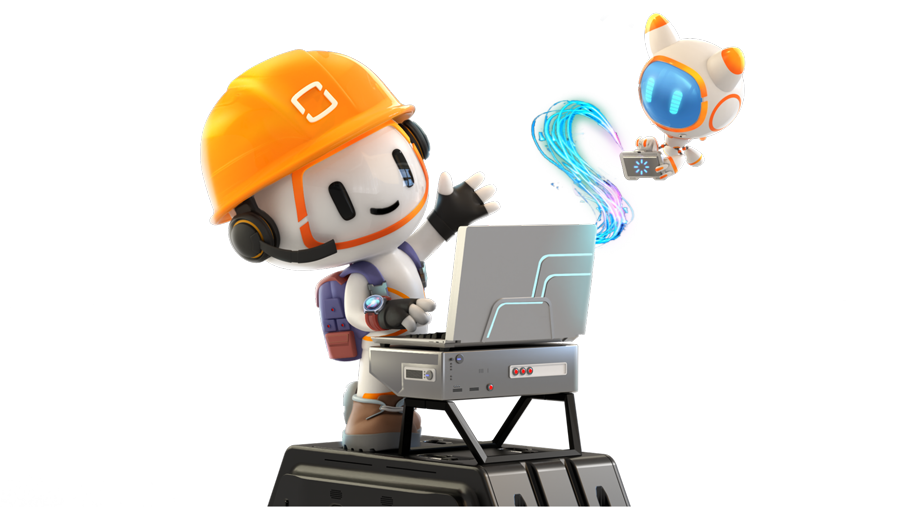
So imagine this—you’re selling some serious high-tech stuff: PV systems, energy storage, EV chargers, or even hydrogen equipment. We’re talking complex solutions that aren’t exactly easy to explain, right?
Some of these terms might even be tough to read, let alone sell.
But what if you could turn these services into a story, featuring a character, that can simplify your message, pull your clients in, show what makes you different, and help them feel like they’re making a smart investment?
Brilliant, right?
Let’s review this with a real-world example.
Once upon a time, there was this brand called Sungrow Power—the world leader in intelligent energy solutions, specializing in high-quality solar power inverter systems.
They were targeting both B2B and B2C, but they wanted to step up their game and really engage their B2B audience better.
They came to us with a ton of concerns. Starting with a key one:
IS THIS EVEN THE RIGHT MOVE?
And a lot more.
How are we going to position the character?
What role will the character play, what message does the character send, and how do we make sure it works for both B2B and B2C?
And of course:
what’s the character’s impact on the Sungrow brand?
Fast forward through hundreds of meetings and a lot of ongoing discussions, and we landed on something big—a whole new communication plan, but this time centered not around one character, but two!
So, you might wonder, WHY two? What difference does it really make and how did we pull it off?
Let us first introduce you to Young Yang and Bubbly.
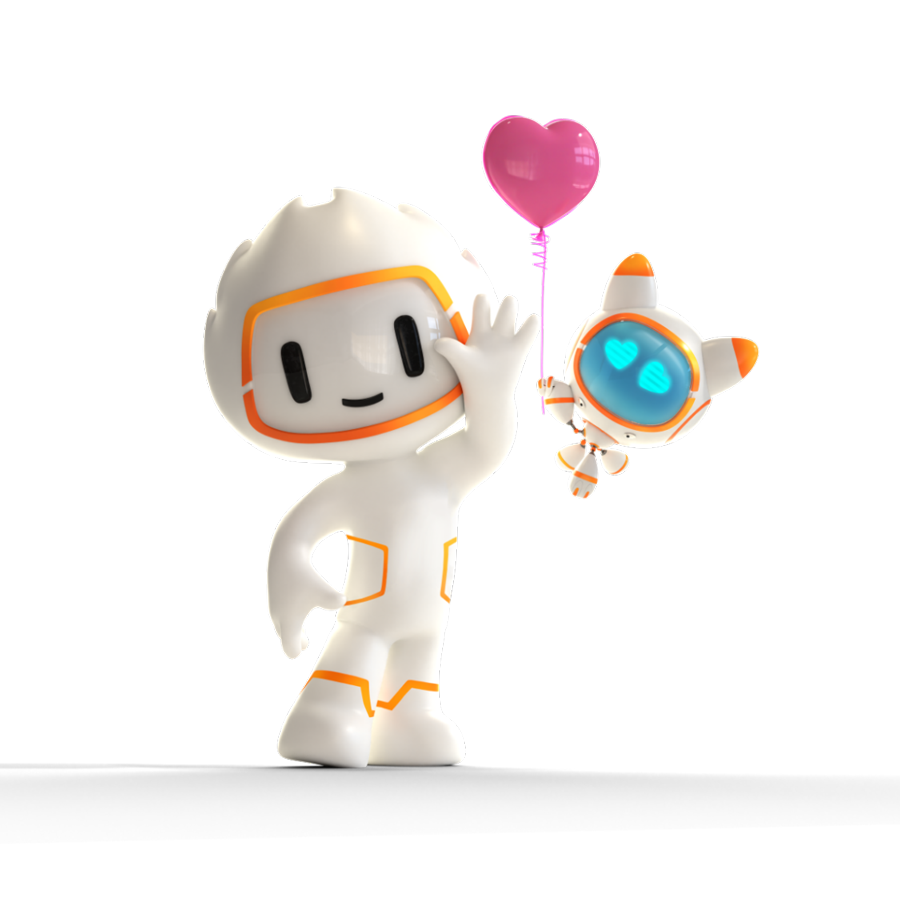
These two characters weren’t just random choices—they were developed to resonate with different audiences, playing specific roles that allowed Sungrow to connect on multiple levels.
What we aimed for wasn’t just a B2B character but something that covered both B2B and B2C.
By playing off the dynamic between Bubbly and Young Yang, we created a team that bridges the gap between B2B and B2C audiences, making them the perfect choice for engaging and educating both sides.
Young Yang: He’s the tech guru—focused on expertise, leadership, and solving problems for the B2B crowd.
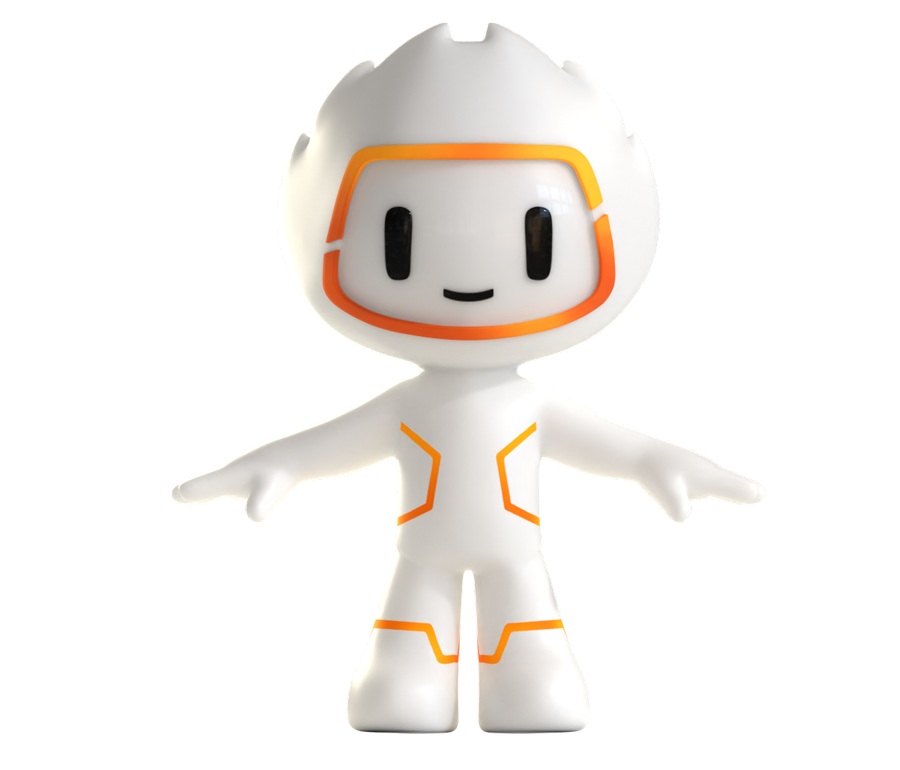
Bubbly: Full of playfulness and innovation, Bubbly’s there to capture the B2C crowd’s attention with ease.
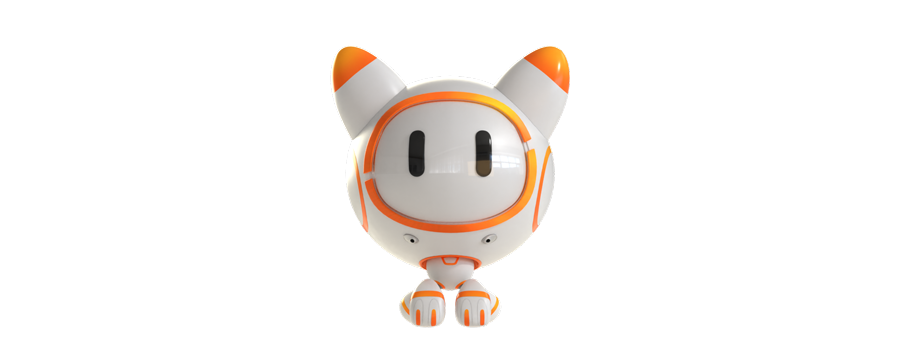
Here’s how we use them:
For B2B: Young Yang is the star at technical presentations, industry events, and professional settings. Bubbly steps in here and there, adding some visual flair or light humor to keep things fun.
For B2C: Bubbly takes over social media, educational videos, and events aimed at consumers. Young Yang still pops in with some tech insights, but Bubbly’s the one making sure it’s easy to understand and fun to watch.
Now, let’s highlight their duo in action:
We’ll show them working together on clean energy projects—combining the tech know-how with practical, real-life examples. We’ll even throw in storylines where Bubbly’s playful ideas spark Young Yang’s innovations, showing how they bring out the best in each other.
How they talk:
Young Yang: When he’s in his professional zone, he’s all about the technical talk—perfect for B2B. But when he’s hanging with Bubbly, his tone switches to something more laid-back and fun, which really connects with B2C audiences.
Bubbly: Always using simple, fun, and engaging language—Bubbly’s humor and visuals will click with the B2C crowd.
Different media for different vibes:
Young Yang: You’ll see him in professional photos, detailed infographics, and technical reports for B2B. But you’ll also get a peek into his casual side with Bubbly in some fun daily-life snaps.
Bubbly: Think animated videos, interactive games, and playful social media GIFs—all for B2C.
Basically, we’re making sure these two B2B and B2C characters work together to nail both audiences, with each of them bringing their own strengths to the table.
Here’s a quick comparison:
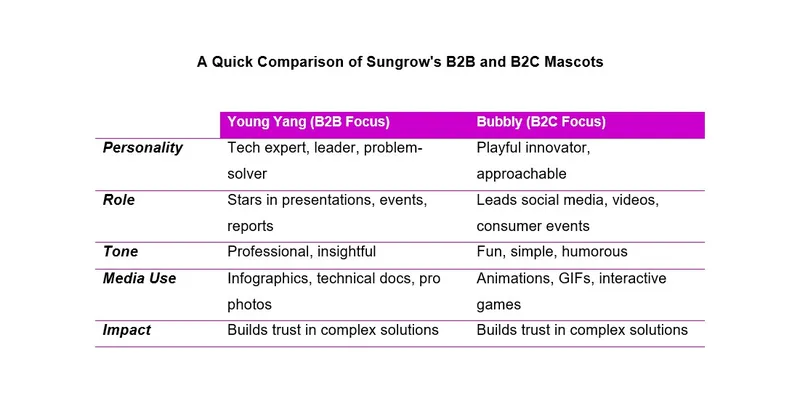
How to Develop a Mascot (Without It Being Cringe)?
So, we’ve talked beautifully about mascots, and now everyone’s ready to jump in and create one.
But hold up—there are a few things to consider.
Mascots aren’t an overnight success story. Asking, “What’s the ROI of a mascot?” can be a real buzzkill, because the return on investment can take a while, especially when developing a B2B mascot.
The thing with mascots is that the best ones have been around for ages, and honestly, it’s hard to imagine how those first few uncertain years felt for them. You’ve got to keep that in mind when you start developing a mascot—it’s a long game, not a quick fix.
And let us tell you, it’s a much bigger picture than just creating a fun character.
Companies reach out to us all the time, saying, “We’ve made a mascot with AI!” And when we ask, “So, why’d you choose a green giraffe with a pink ponytail?” they hit us with, “Oh, it’s the CEO’s daughter’s favorite toy”.
And we’re just like—please, don’t do this.
Here’s our quick pro process to keep it sharp:
- Define Your Core: Nail your brand’s values and goals. Pick a character that mirrors them as a distinctive brand asset.
- Brainstorm Concepts: Sketch ideas tied to your industry. Aim for CEPs that spark instant recall.
- Design Iteratively: Build looks, poses, and expressions. Test for anthropomorphism that feels real, not forced.
- Develop Guidelines: Set rules for voice, use, and media. Protect it as an IP asset.
- Launch Strategically: Roll out with a campaign. Track brand equity gains and tweak.
It’s a lot, but trust me, when done right, it’s worth it. Ready for the full playbook? Check our brand mascot total solution below.
If you’re thinking about adding a mascot to your communication plan, our team is here to help.
With over 10 years of experience and the development of more than 2,500 characters, we’ll guide you through every step to unlock the full potential of your new team member!
Learn more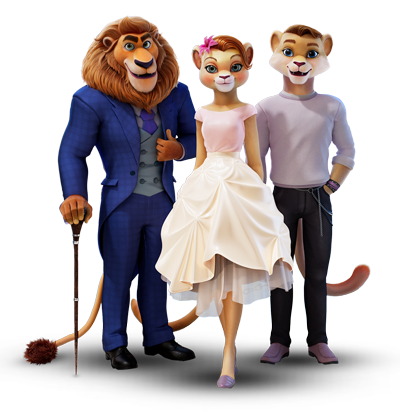
Should Startups Use Mascots?
Now that we’re on the topic of timing, let’s talk about newer brands for a second. Build it into your DNA early, but be careful. The thing with mascots is they need to be completely in sync with the brand’s identity, values, and vision.
It’s got to showcase what the brand is all about, no question.
A mascot can help a startup punch above its weight class. It amps mental availability from day one. Just ensure it aligns with where you’re headed.
Things change as brands grow, right?
Get that fit right, and you’ll own your share of voice before the big guys notice.
The Next Evolution: AI-Powered B2B Brand Mascots
Mascots are leveling up. AI brings them to life in wild ways. Imagine your character chatting in real-time, personalizing pitches, or popping into VR demos. It’s not sci-fi; it’s now.
This evolution in mascot technology opens new avenues for engagement and interaction.
At Dream Farm, we adopt a comprehensive approach for B2B businesses to leverage this evolution. We enhance brand presence and drive growth through innovative mascot strategies.
We’re a marketing agency with expertise in character creation and development. What we do is different from gen-AI platforms and tools. An image is just pixels. A mascot is a brand system: voice, story, guidelines, all woven in. It’s your fluent device on steroids, boosting emotional connection across channels.
Want the deep dive? Read our post on virtual mascots.
FAQs: Common Questions About B2B Mascots
Got questions? We’ve got answers. Let’s clear the air.
Q1: Are brand mascots “unprofessional” for serious B2B companies?
Nah. They humanize tough topics. Think Salesforce’s Astro—pro yet approachable. It’s about balance, not cartoons gone wild.
Q2: What is the actual ROI of a B2B mascot?
Data says 37% market share bumps and 34% profit lifts. Plus, lower CAC through better recall. It pays off in loyalty.
Q3: Can I use AI tools like Midjourney to design my mascot?
Sure for sketches. But pros handle the brand system: IP, guidelines, strategy. Pixels alone won’t build equity.
Q4: What is the difference between a “Mascot” and a “Fluent Device”?
A mascot is your character star. A fluent device is broader: any repeatable element (like jingles) that sticks. Mascots often lead the pack.
Q5: How long does it take to develop a professional B2B mascot?
It typically takes three months to create, develop, and prepare a mascot for launch.
Ready to Stand Out? Now Let’s Talk Mascots
Playing it safe by not using a mascot—or really, by not trying anything different from the usual norms—is definitely the safer option.
Sometimes, being too safe can actually be risky.
It’s always worth making the most of every opportunity to connect with your customers and show off your brand’s personality and values. But let’s be real—taking risks and handling them smartly is something you can’t ignore.
In B2B, fewer companies seem interested in mascots, which, as we see it, means it’s actually the perfect time to get one going.
If you’re thinking about adding a mascot to your marketing plan, explore our portfolio of brand mascot development and reach out for a free consultation to bring your brand to life.
We’ll help you figure out if it’s the right move for your brand, and if it is, we’ll be with you from the very first step all the way to making your mascot the talk of the town.

Nancy
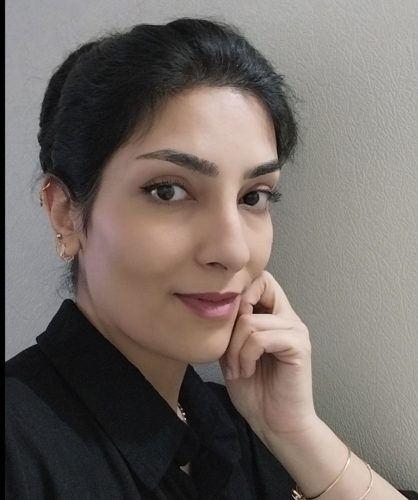
Leila
